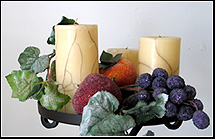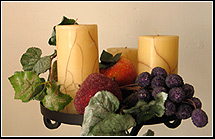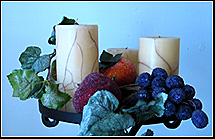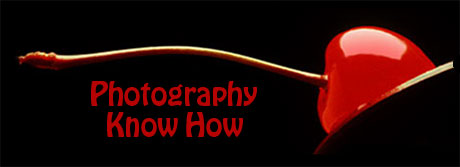All digital cameras have an auto white balance setting that allows the camera to detect the color of the light and balance it correctly.
When you look at a white object, say the page of a book or a sheet of white paper, it appears white to you regardless of the light source. When lit by an ordinary household bulb, or a florescent light, or outside in daylight it still looks white to your eye.
But to the camera’s eye, each of these light sources is different and each produces a tint of color on the white object. And unless the camera makes some sort of adjustment for this variation in light color, a white object will not appear white in your photos.
In fact, everything in your photo will have a color cast to it… it is just more obvious in the whites and near whites than in other colors. This is the function of the white balance feature in digital cameras.
Why White Balance Is Important
 The image to the left was shot using the camera’s auto white balance setting.
The image to the left was shot using the camera’s auto white balance setting.
The light was daylight and the color is correct for this subject.
Light is measured in degrees Kelvin, such as 3200K or 5800K. This is known as the color temperature of a light source. With film cameras you could use different kinds of film or filters to get the correct color.
But with digital photography the camera’s image sensor is your film and it doesn’t change, so it is necessary to tell the sensor what color light source it is recording or it won’t be able to reproduce colors correctly in your photos.
Overriding Auto White Balance
Some cameras offer an option to override the automatic setting and let you set the white balance manually. You may have a selection of several settings from which to choose.
The more common ones are: sunlight, shade or cloudy daylight, tungsten or indoor, florescent and electronic flash. Below are a couple of examples of using different settings with daylight.
 The light was daylight, but the setting was for cloudy daylight.
The light was daylight, but the setting was for cloudy daylight.
Though the color is not correct, it could still be OK, if you wanted a slightly warmer feeling.
 For this shot, I used the setting for tungsten (or indoor light).
For this shot, I used the setting for tungsten (or indoor light).
Since daylight is much bluer than indoor light, the result was an overall blue cast.
Go Ahead And Experiment
If your camera has the option to override the auto white balance setting, you may find it fun experimenting with the various settings. While most of the time you will want accurate color reproduction, there are times when using a deliberate color cast can be a useful tool in creative photography.
You may want to change the light balance to enhance a certain mood, or create an unusal effect that is more interesting than properly balanced color would produce. So experiment with these options and add them to your toolbox of creative controls.




[…] the auto white balance setting on your camera doesn’t seem to be giving you the colors you expected, then knowing these […]